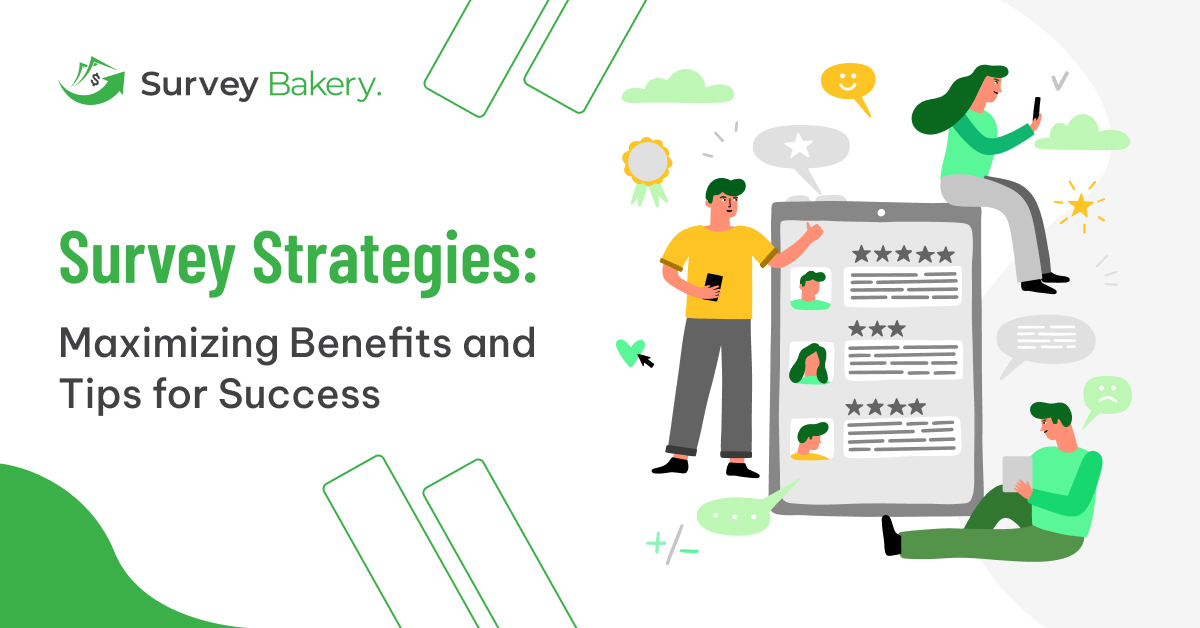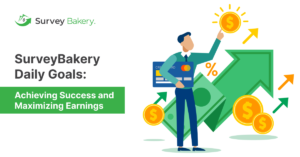Surveys are powerful tools for gathering information. They can help us understand customer preferences, employee satisfaction, or public opinion on a hot-button issue. However, a poorly designed survey can frustrate participants and fail to produce meaningful data. In order to maximizing benefits of your survey and ensure its success, here are some key legit survey strategies to consider.
Know Your Why – Defining Your Survey Goals
Pause for a moment before engaging in the questions. What is this survey intended to achieve? Are you trying to gauge customer satisfaction with a new product? Identify areas for improvement in your company culture. A well-defined target will help you develop questions that will guide your analysis of the results.
Targeting the Right Audience – Who Are You Asking?
Whom you ask is as important as what you ask. That’s where the real survey success tips come in. However, sending out surveys to everyone on your contact list may be efficient, but it risks getting irrelevant responses that skewer your figures. Pinpoint the specific group whose opinion you need. It could be current consumers, potential clients who fall into a particular demographic, or all members working within one organization.
Crafting Clear and Concise Questions
Once you have identified your target audience and objectives, then it’s time to construct questions. Here are some guiding principles:
- Clarity is Key – Avoid jargon, technical terms, or double negatives so that everyone in the targeted group can understand them.
- Stick To One Question Per Question – Do not try squeezing many tips for success into one question because it may puzzle interviewees, leading to misleading information.
- Open-ended Vs. Close-ended – Both types of questions have their importance, with closed-ended questions having multiple answers that are easy to analyze, while open-ended questions provide deep insights.
- Avoid Bias – Avow questions in a hint-free way. Do not manipulate the respondents to answer in a certain way or use language that can be offensive to some people.
Designing User-Friendly Survey Ideas
People are busy these days. Therefore, make your survey as quick and easy as possible. Below is how:
- Make it Concise – The longer a survey gets, the higher its chance of being abandoned. The best paid surveys should aim towards 10-15 minutes or even less.
- Logical Flow – Ensure that your questions follow an orderly sequence such that they make sense to the respondent.
- Mobile-Friendly Design – Ensure your survey displays well and is easy to navigate on smartphones and tablets. Think about using Survey Bakery, for example, which is one platform that offers mobile-friendly paid surveys.
Boosting Response Rates – Getting People to Participate

A good survey cannot be considered valuable if nobody participates. Here are some tips for success that can encourage participation:
- Personalization – Address individuals by their names where possible and highlight why their feedback matters when you invite them for a survey.
- Rewards – Giving something small, such as a coupon code or entry into a raffle, can significantly boost response rates.
- Multiple Delivery Channels – Respondents may choose an email, a link on the website, or even a QR code to use to take up the survey.
Learn: How Survey bakery is Revolutionizing Online Rewards
Analyzing Your Data – Turning Information into Action
After people have filled out their answers, the actual work starts! Examine the responded data closely with an eye for trends, patterns as well as areas of agreement and variation. Don’t just look at figures but rather get into open-ended responses to gain a more profound understanding of the audience’s perspective.
Taking Action – Putting Your Findings to Use
The next most important stage is implementing what you have found. Give the report that shares all these findings to relevant people and use them in making decisions. Can this survey help in showing improvement areas in terms of customer service? Train your staff by coming up with a training plan. Was your employee survey about any issue with company culture? Either organize team building activities or change internal policies.
Avoiding Common Pitfalls – Common Survey Mistakes
Here are some common survey mistakes to avoid:
- Leading Questions – Ensure that none of your questions influence respondents to give specific answers.
- Technical Glitches – It may be wise to test your survey thoroughly before going live to ensure a smooth user experience.
- No “Other” Option – Sometimes, it’s good to provide an “other” option for capturing unexpected responses to some questions.
- Ignoring Non-Responses – Consider why some persons failed to respond to your survey. Was it too lengthy, or were they uninterested in its topic?
Also, You Can Explore 5 Proven Ways to Make Money Online In Spare Time
Why Is It Important to Have a Clear Survey Strategy in Place?
It would be like walking on a road trip with no destination or map. Depending on luck, you could end up somewhere beautiful. However, it is unlikely that you will get where you really want. Best paid surveys are the same way as they result in absurd data without clear survey strategies.
So why is having a well-defined survey strategy important? Here’s why:
Precise Results
This ensures that targeted questions that collect specific information can be formulated by using it as a starting point. Hence, what you are doing is not collecting disorganized data but rather drilling down into what is really important for the purpose of informed decision-making.
Efficient Utilization of Resources
Surveys require time and effort to create, distribute, and analyze. A well-defined strategy mitigates against wastage resulting from this exercise. You will not be sending out surveys to the wrong audience or asking irrelevant questions, saving you time, money, and frustration.
Actionable Survey Insights for Better Insights
A survey provides information that can be used to enhance products, services, or internal processes. When relevant strategies are in place, best surveys can achieve this objective. It helps you move from “what” (data) to “so what” (meaningful takeaways) and finally “now what” (concrete actions).
Increased Response Rates
People receive so many requests for their time. With a clear strategy, you have a brief, well-designed survey that respects the respondent’s time. Hence, they are likely to fill it out. As a result, more people will tend to complete your survey, thereby increasing the likelihood that more valuable data will be collected.
Reduced Bias
A poorly designed survey may contain biases leading to skewed outcomes. However, when question-wording, as well as answer choices, among other issues, are provided in a bias-free manner through strategic direction, such problems do not arise. This way, it won’t matter whether these opinions have a bias or not because one would obtain accurate results.
Let’s Illustrate This With An Example
- Goal definition – are you trying to understand total taste and texture satisfaction levels, find out specific preferences, or seek awareness about possible expansion of the gluten-free range?
- Audience targeting – instead of everyone stepping into your bakery, you would survey customers who have bought a gluten-free pastry.
- Question clarity – For instance, rather than ask concepts like “What do you think of our new cakes?” you may want to inquire about flavors, textures, and dietary requirements.
- This kind of approach creates more valuable information than general surveys done. Consequently, one can use this to improve their gluten-free meals and attract a larger consumer market.
It’s A Wrap!
These survey success ideas enable you to come up with a survey that will help maximizing benefits while avoiding common mistakes. A good survey design helps to provide insights that are important in making informed choices as well as meeting set objectives. Consider using an easy-to-use survey platform such as Survey Bakery, which allows professional mobile-optimized surveys to be created within minutes.



